
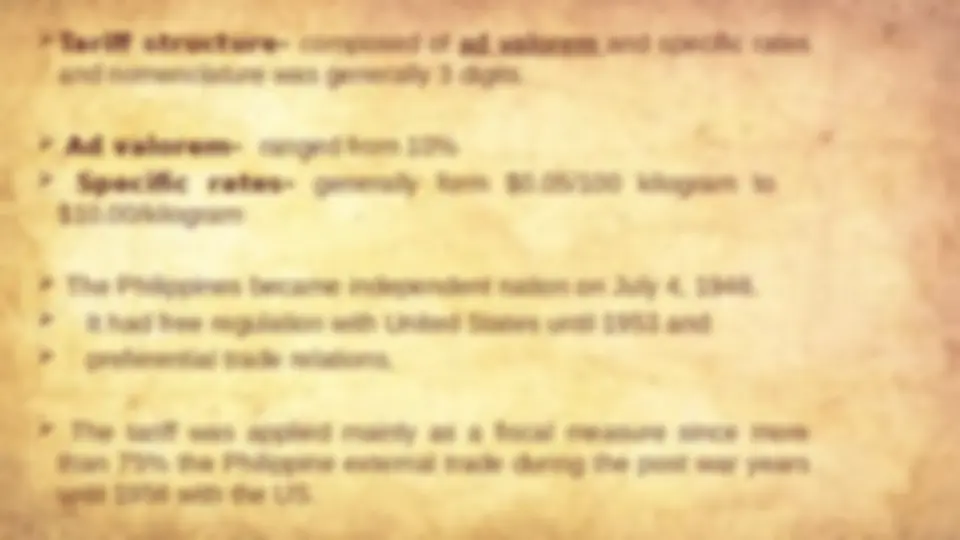
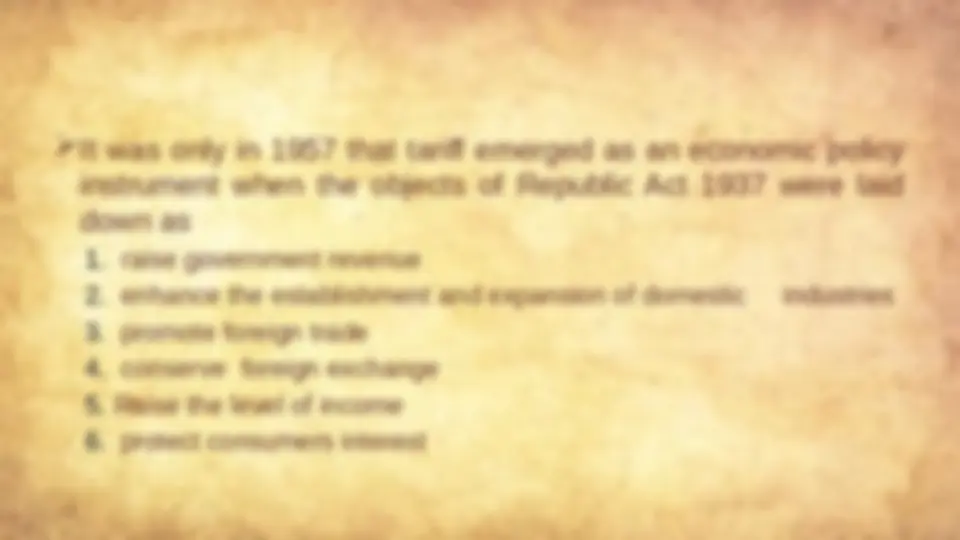
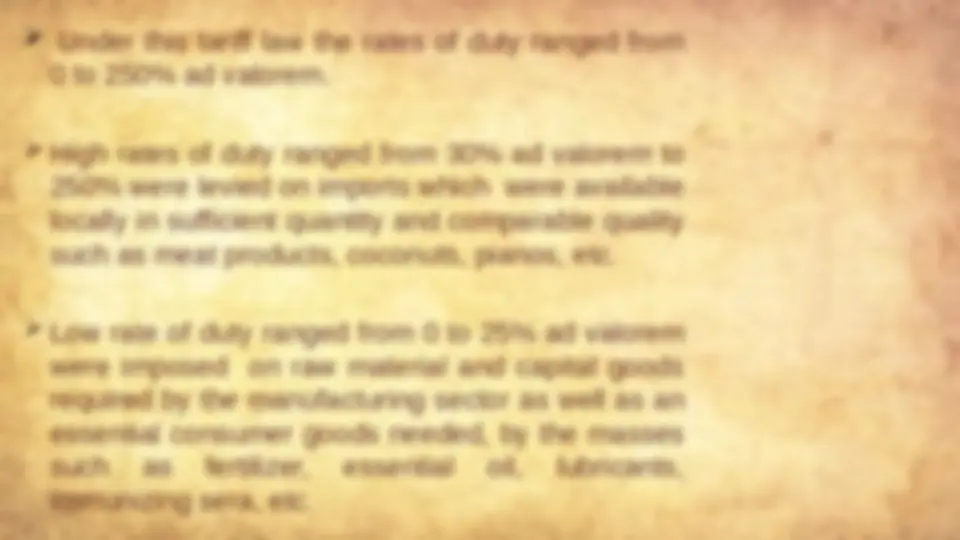
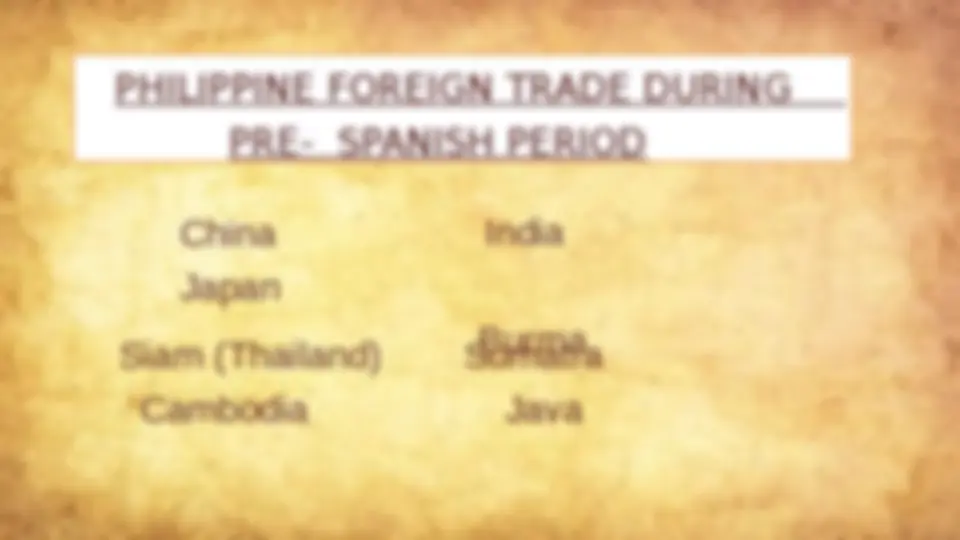
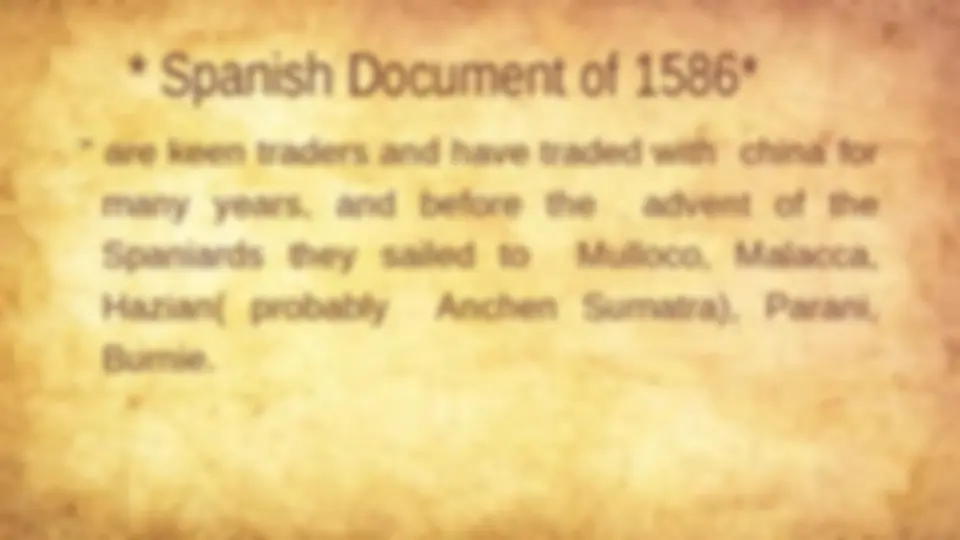
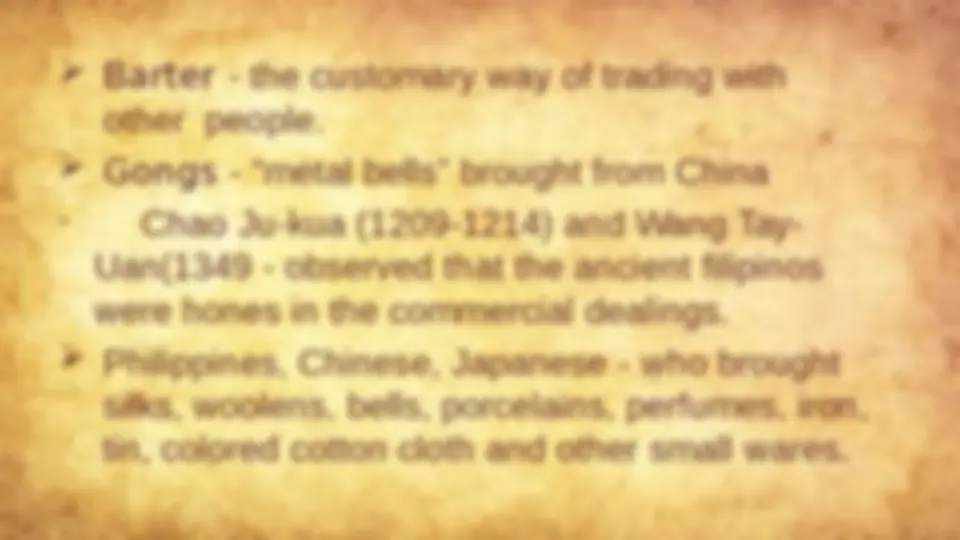
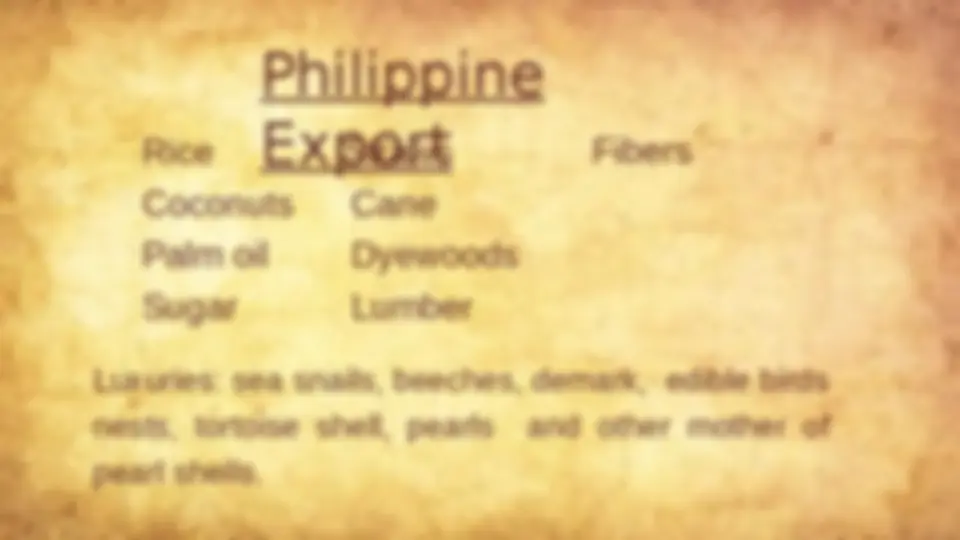
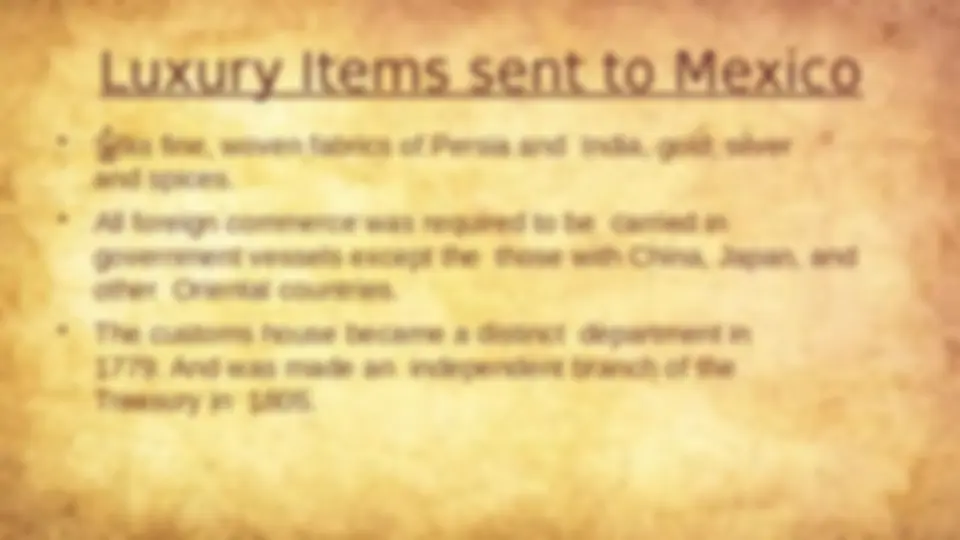
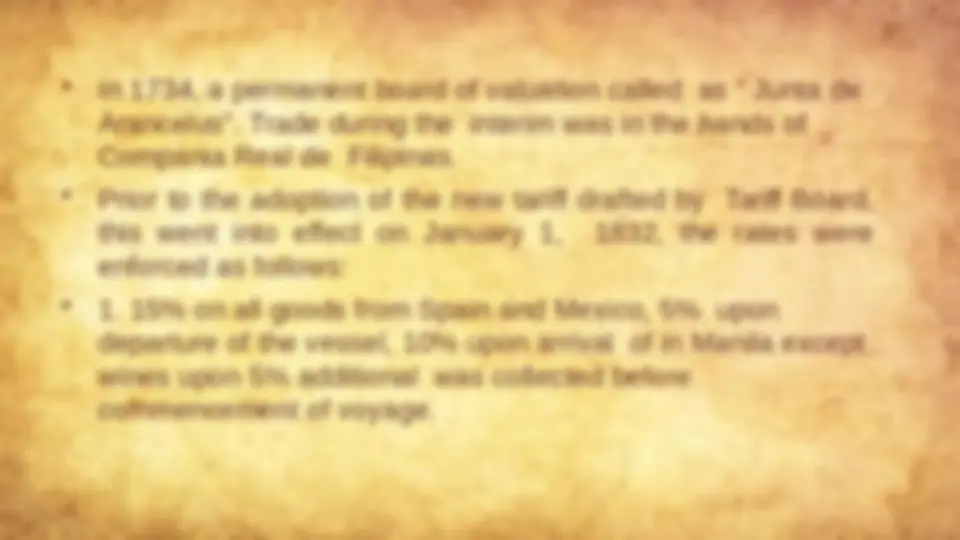
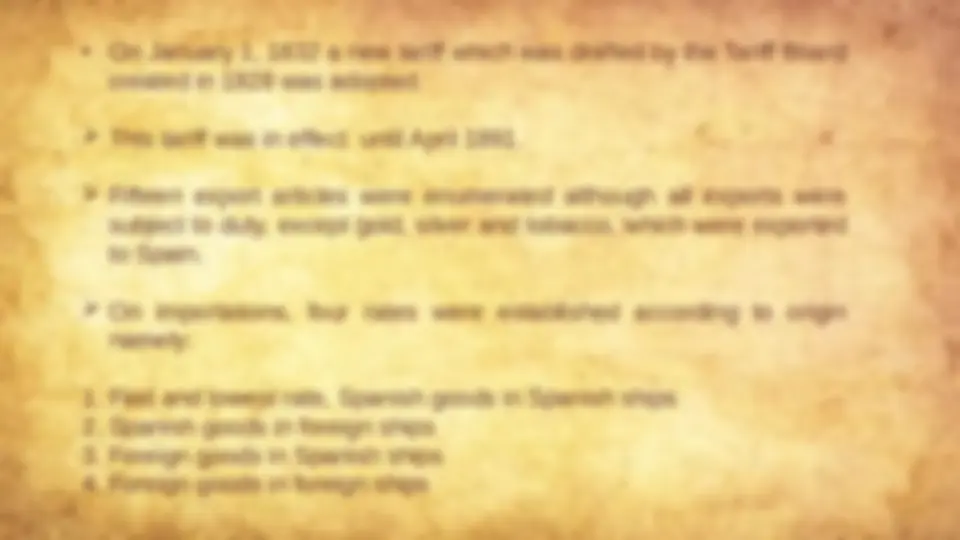
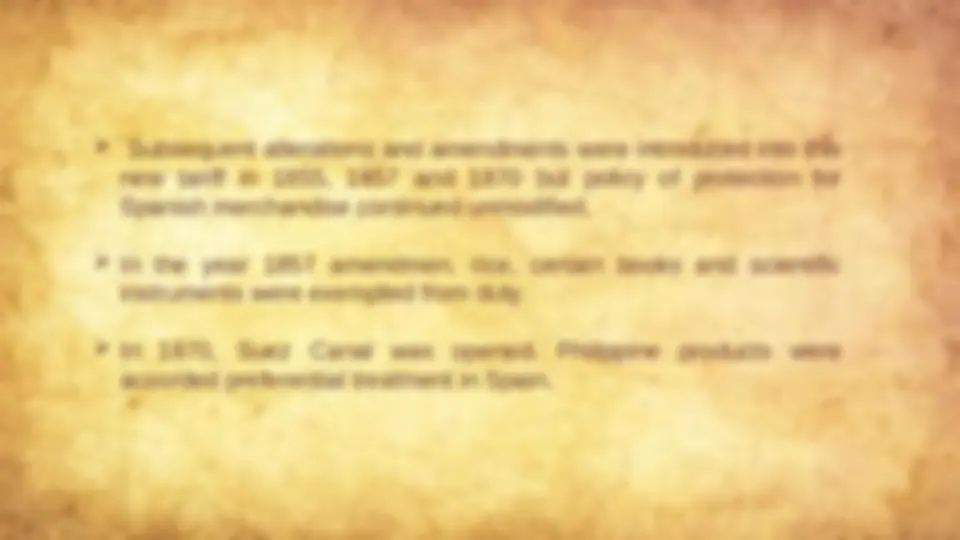
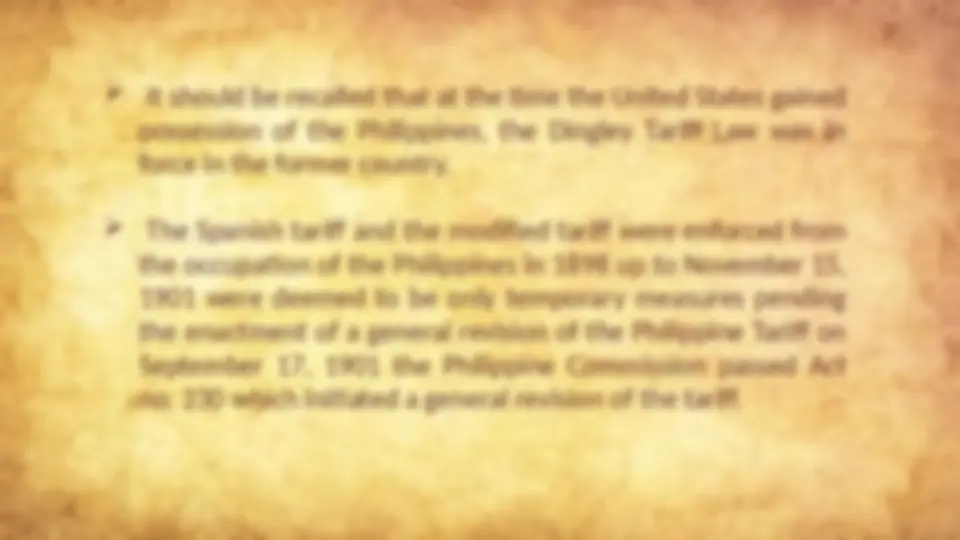

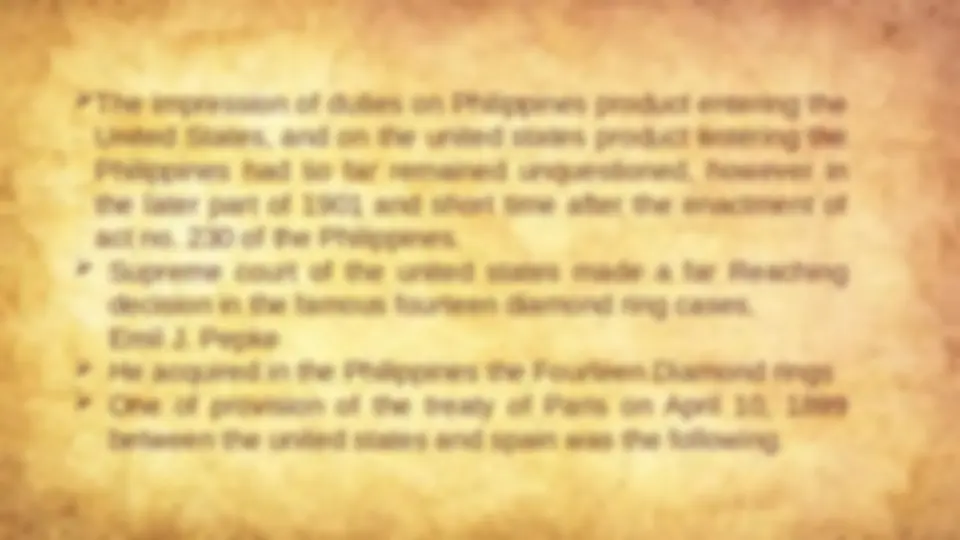
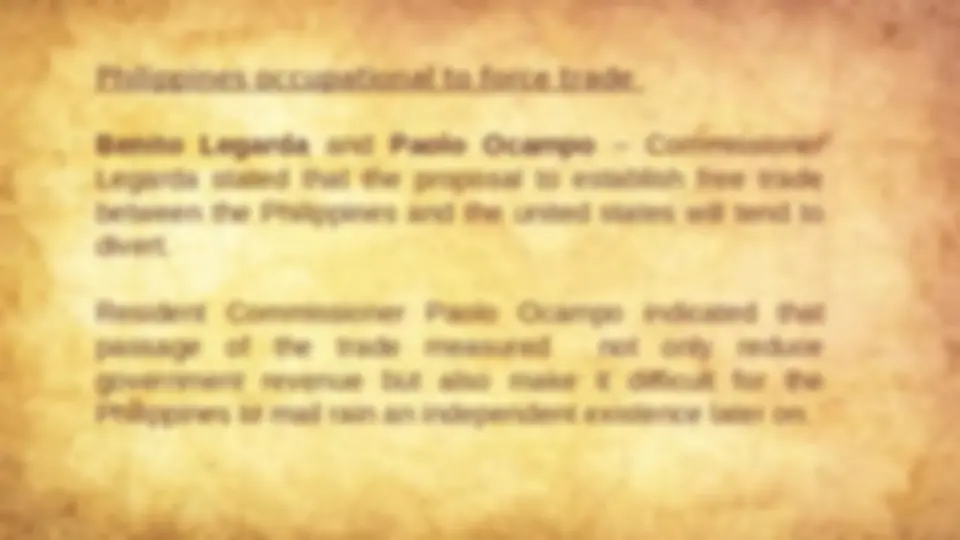
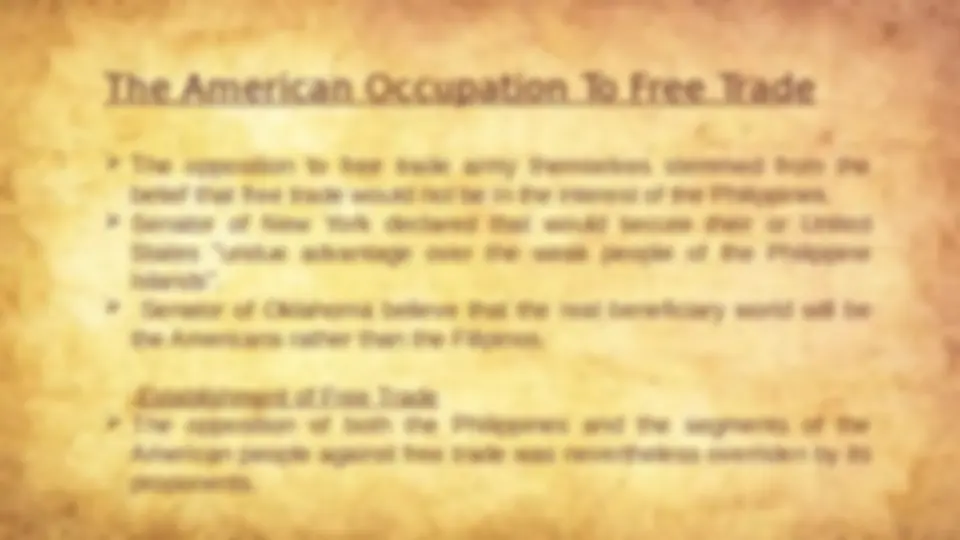
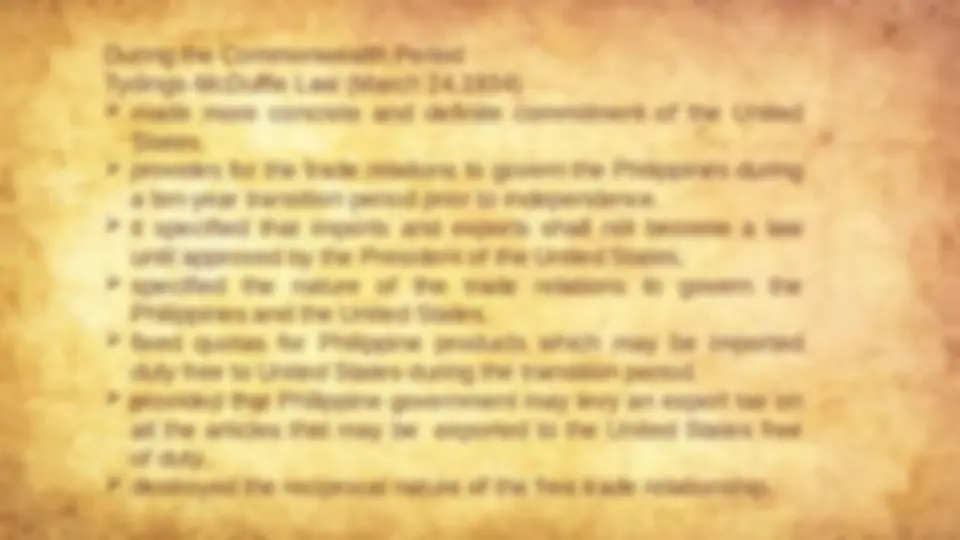
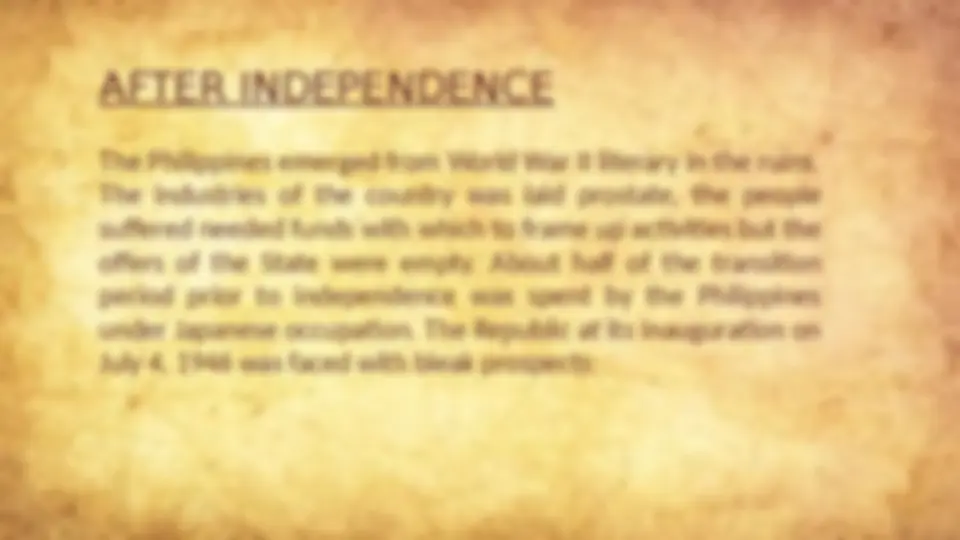
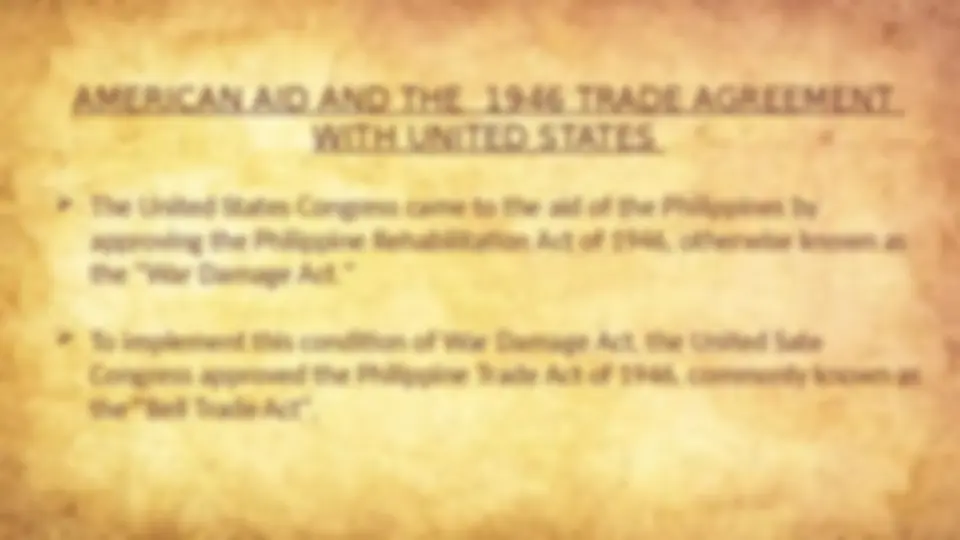
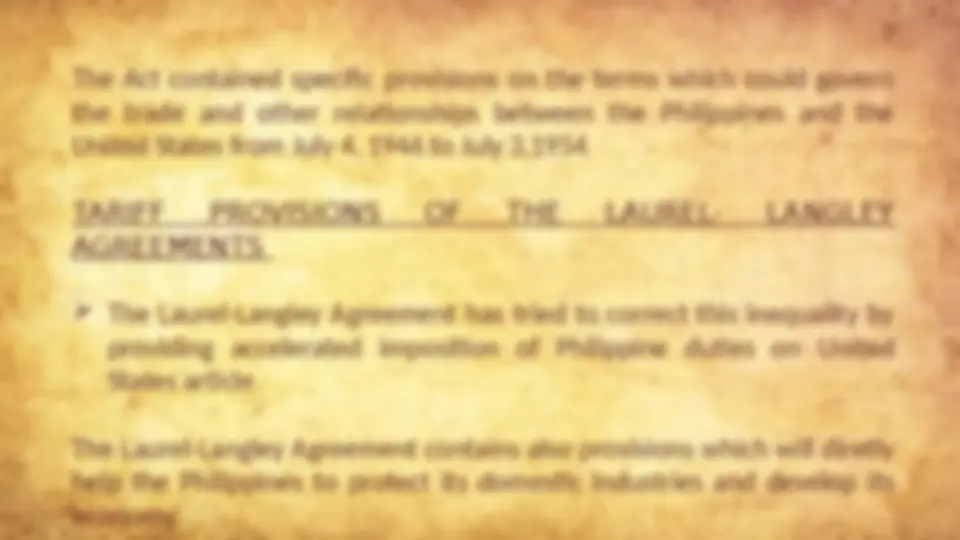
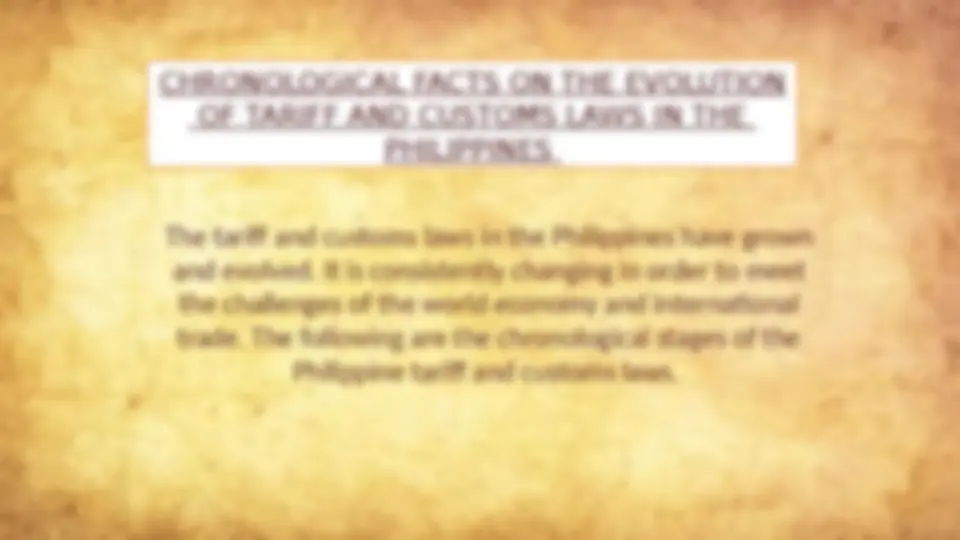
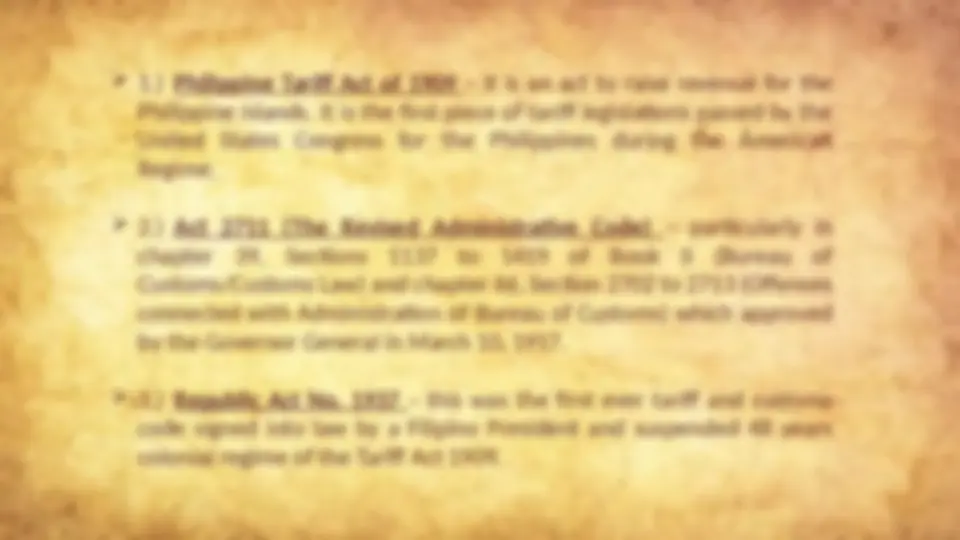
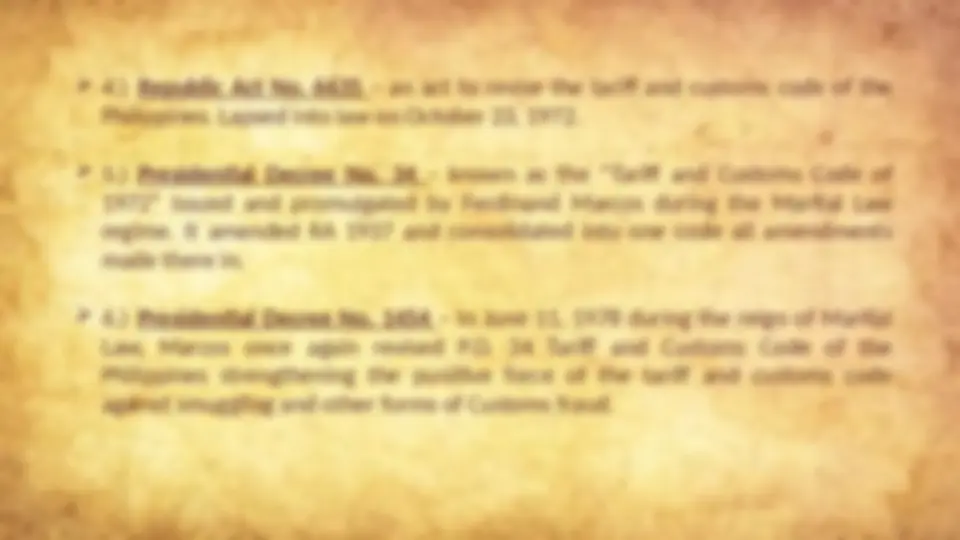
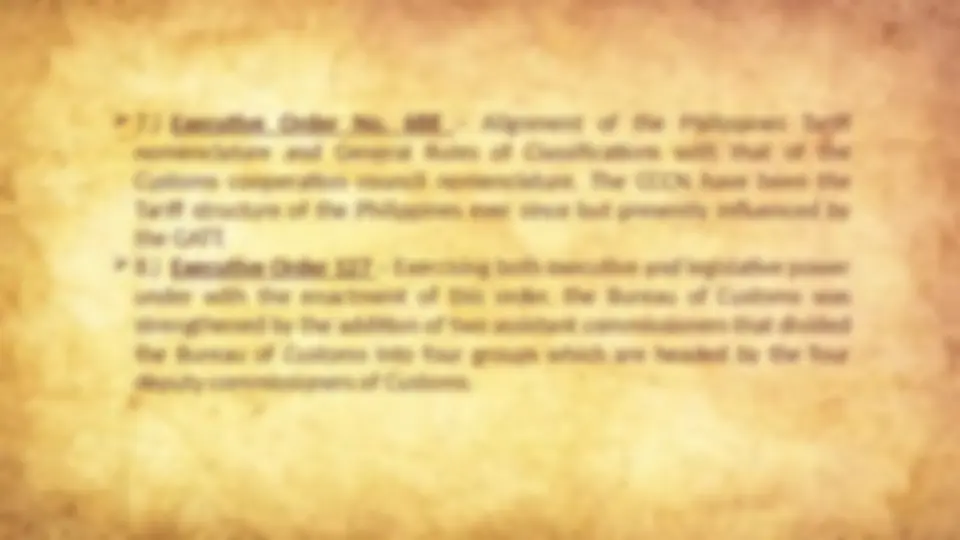
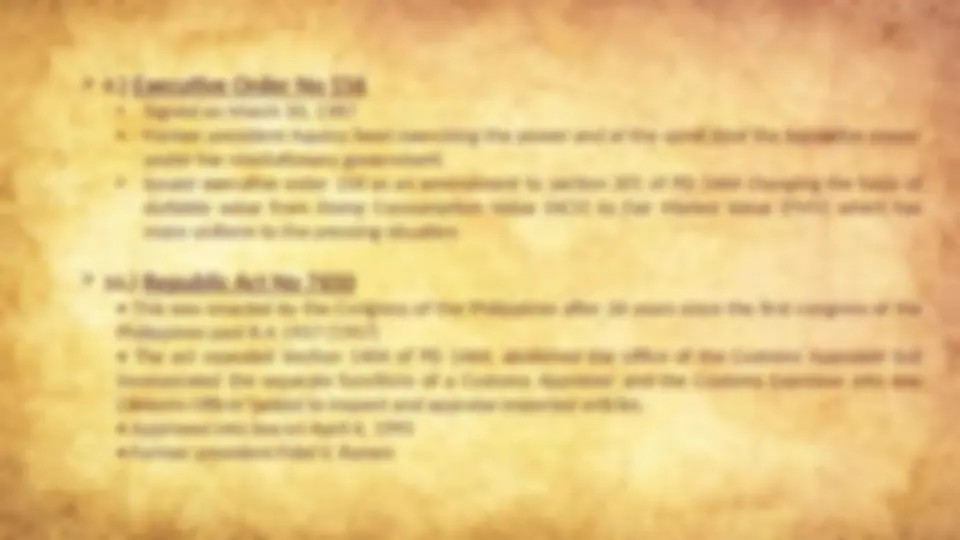
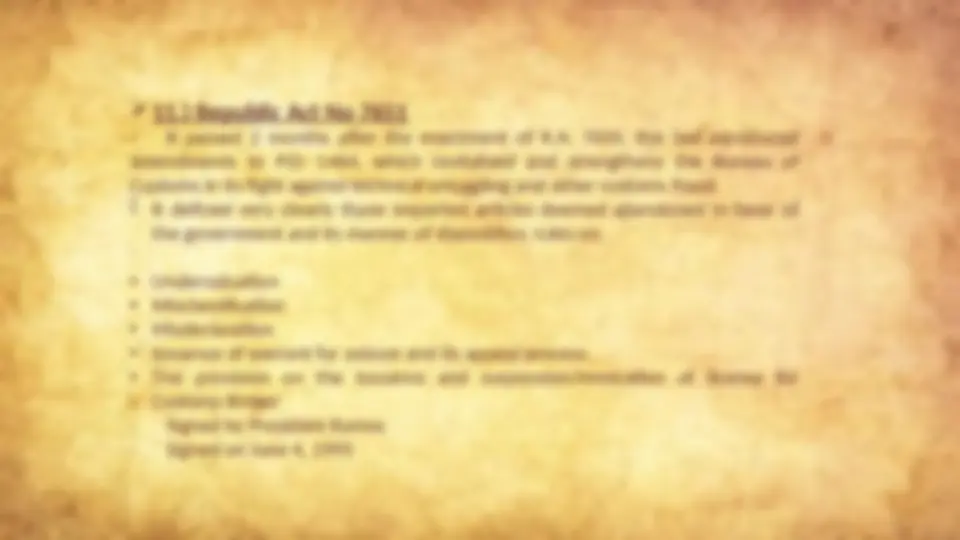
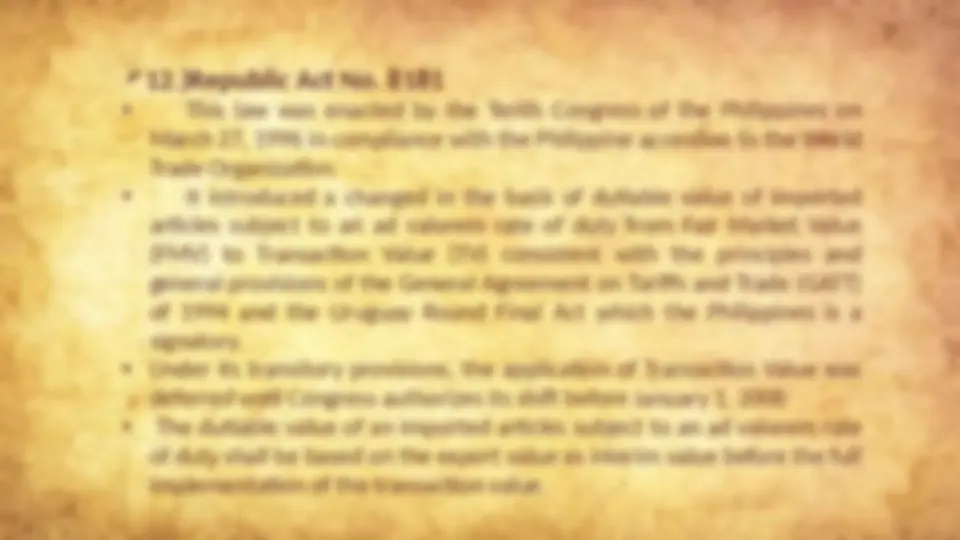
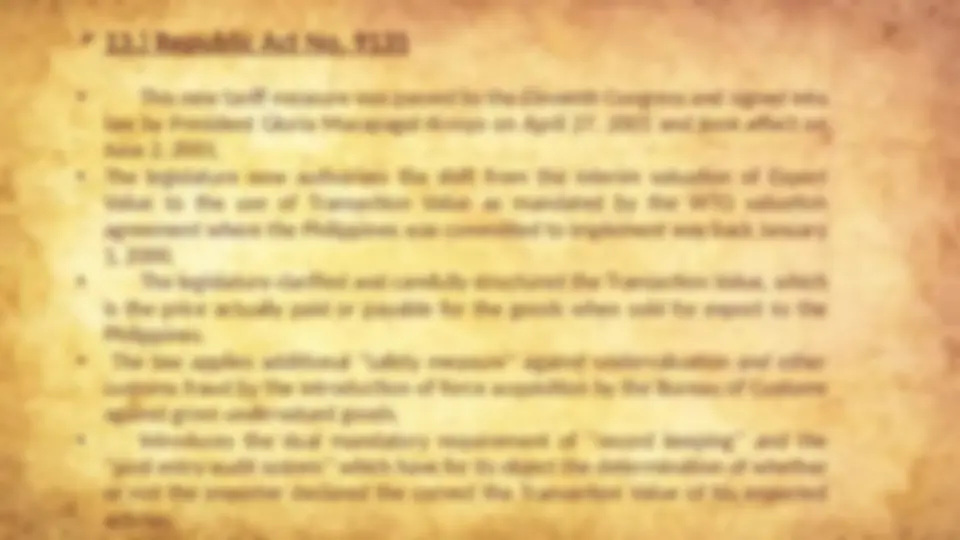
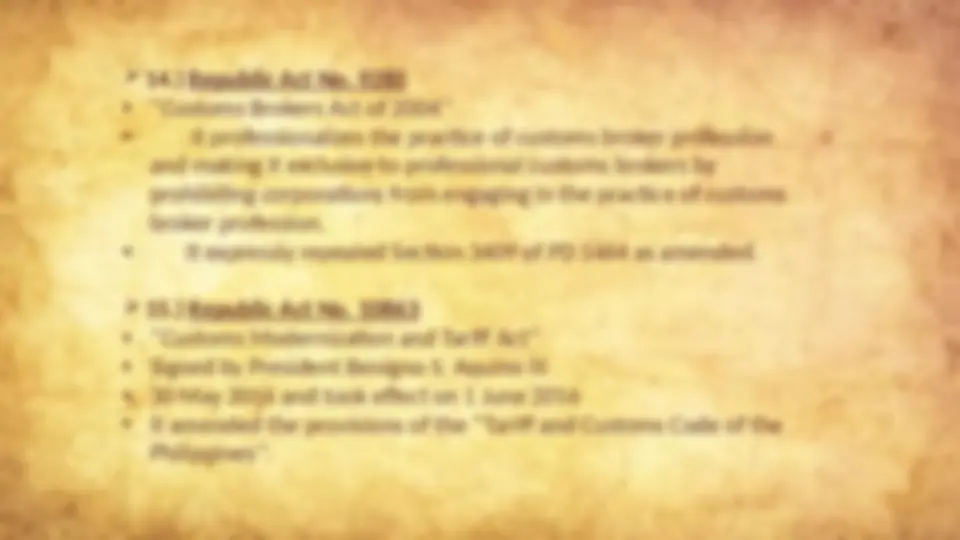
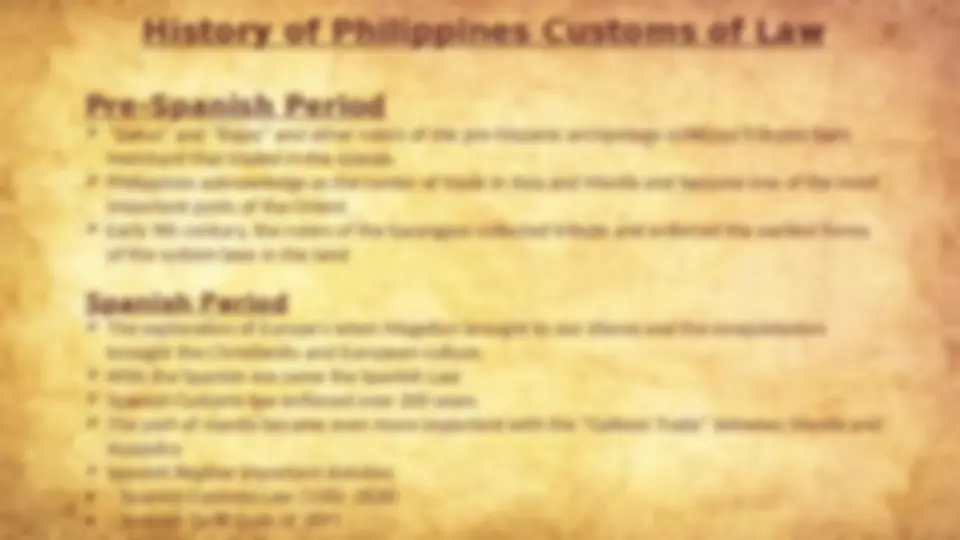
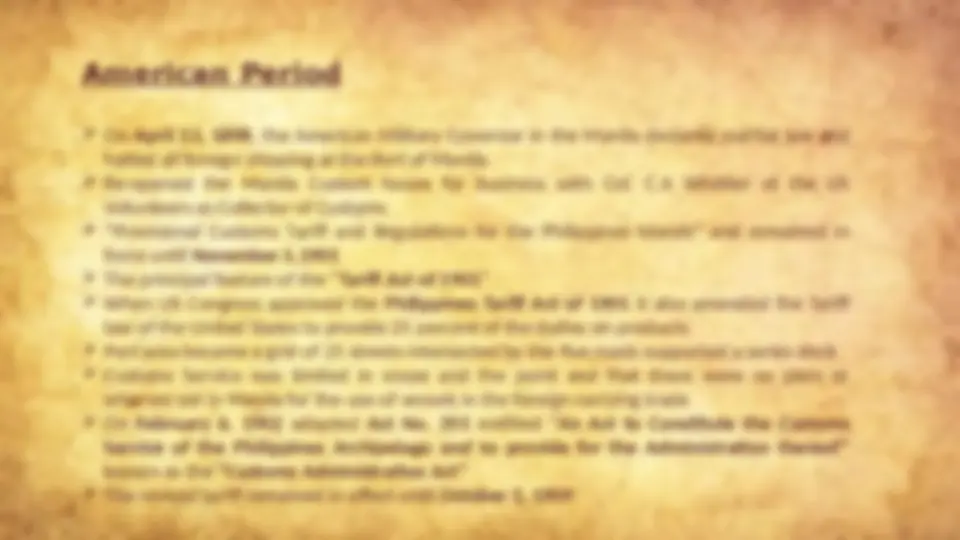
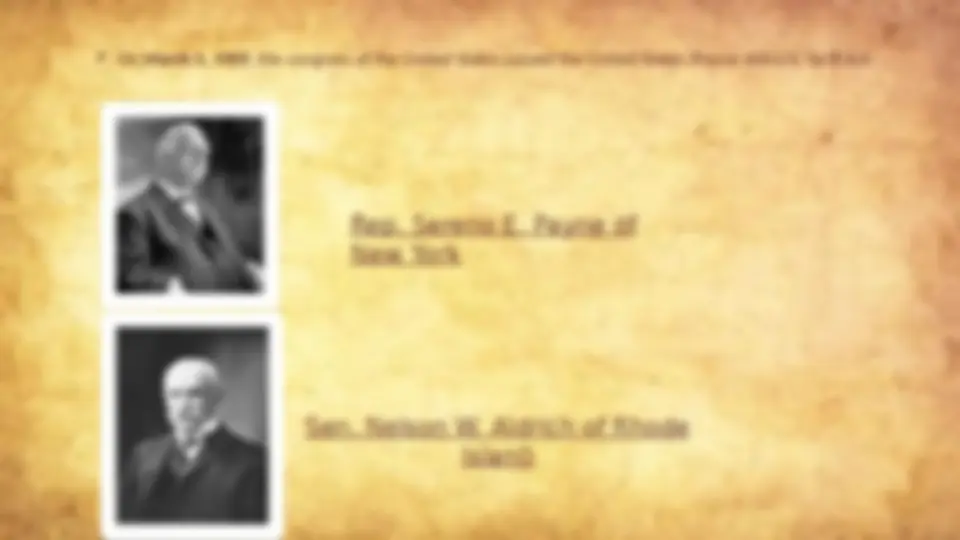
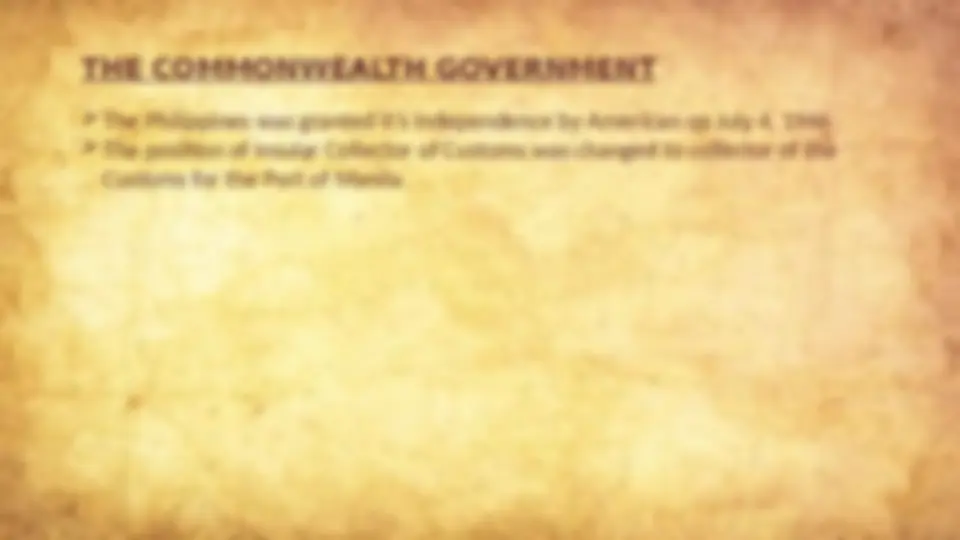
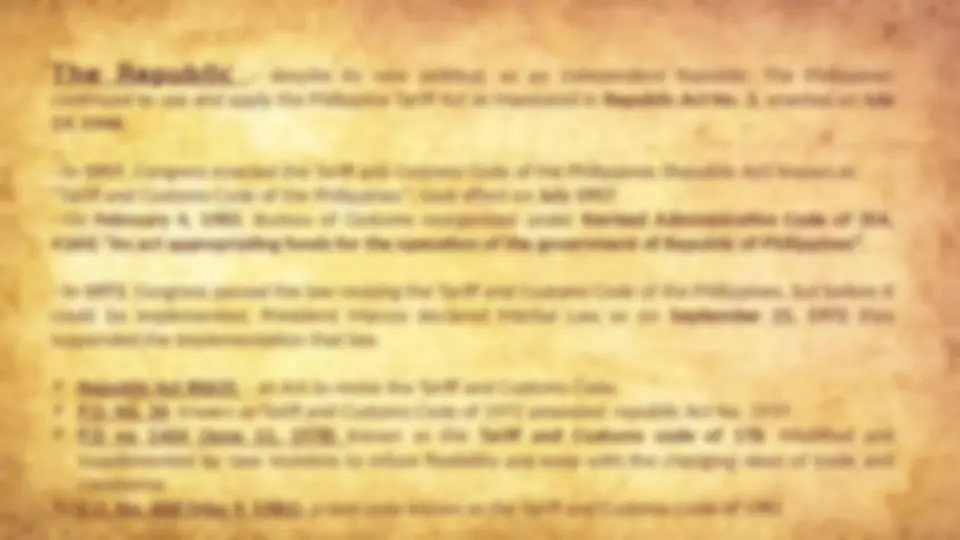
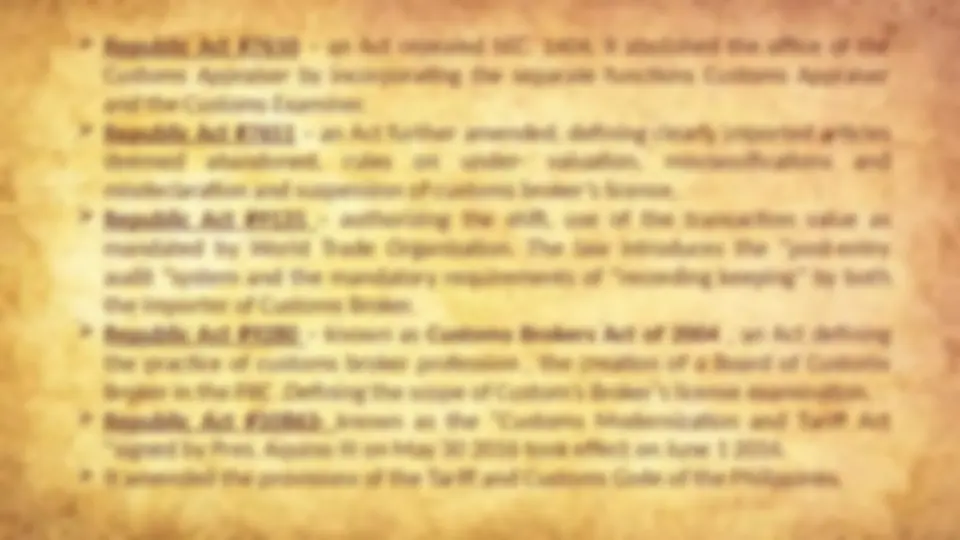



Study with the several resources on Docsity

Earn points by helping other students or get them with a premium plan


Prepare for your exams
Study with the several resources on Docsity

Earn points to download
Earn points by helping other students or get them with a premium plan
Community
Ask the community for help and clear up your study doubts
Discover the best universities in your country according to Docsity users
Free resources
Download our free guides on studying techniques, anxiety management strategies, and thesis advice from Docsity tutors
History of Custom aslkfhaslk fhlk;haldaaslkdjara;lkhal;dhadah;lsd
Typology: Lecture notes
1 / 44

This page cannot be seen from the preview
Don't miss anything!





































The Philippines' first tariff law was passed by the
Congress of the United States, tariff act of 1909
approved on August 5, 1909
Some revisions continued to be in force until it was
replaced by the 1937 known Republic Act as the tariff and
custom code of the Philippines on June 22, 1957. A tariff
law was passed by a Filipino congress
It was only in 1957 that tariff emerged as an economic policy
instrument when the objects of Republic Act 1937 were laid
down as
Under this tariff law the rates of duty ranged from
0 to 250% ad valorem.
High rates of duty ranged from 30% ad valorem to
250% were levied on imports which were available
locally in sufficient quantity and comparable quality
such as meat products, coconuts, pianos, etc.
Low rate of duty ranged from 0 to 25% ad valorem
were imposed on raw material and capital goods
required by the manufacturing sector as well as an
essential consumer goods needed, by the masses
such as fertilizer, essential oil, lubricants,
immunizing sera, etc.
HISTORY OF
PHILIPPINE
TARIFF SYSTEM
PHILIPPINE FOREIGN TRADE DURING
PRE- SPANISH PERIOD
China
Japan
India
Burma
Siam (Thailand)
Cambodia
Sumatra
Java
Barter - the customary way of trading with
other people.
Gongs - “metal bells” brought from China
Chao Ju-kua (1209-1214) and Wang Tay-
Uan(1349 - observed that the ancient filipinos
were hones in the commercial dealings.
Philippines, Chinese, Japanese - who brought
silks, woolens, bells, porcelains, perfumes, iron,
tin, colored cotton cloth and other small wares.
DURING THE SPANISH
PERIOD
The ancient almojarifazgo ( a 3% ad valorem duty)
imposed on both imports and exports was amplified to
the philippine customs house was established in
Manila by Governor Guido de Lavezaris in 1573. The
Governor- General did not enforce the almojarifazgo
at once. It took Gonzala Ronquillo de Penalosa the
fourth Spanish Governor- General to impose almoja
rifazgo in 1582.
Philippine
Rice Export Fibers
Coconuts
Palm oil
Sugar
Straws
Cane
Dyewoods
Lumber
Luxuries: sea snails, beeches, demark, edible birds
nests, tortoise shell, pearls and other mother of
pearl shells.
Luxury Items sent to Mexico
:
and spices.
government vessels except the those with China, Japan, and
other Oriental countries.
Treasury in 1805.
2.3% on all goods from other countries, except those
from China which was 6%.
3.10% of all Asiatic merchandise to Mexico and based on
official values.
4.3% on all exports other than Asiatic. Duty was based on
official values.
prepare a new tariff bases on the following purposes.
Junta de Arancelus as follows:
1.To increase revenue.
1.To protect the agriculture
and arts of the islands, and
commerce.
Subsequent alterations and amendments were introduced into this
new tariff in 1855, 1857 and 1870 but policy of protection for
Spanish merchandise continued unmodified.
In the year 1857 amendmen, rice, certain books and scientific
instruments were exempted from duty.
In 1870, Suez Canal was opened. Philippine products were
accorded preferential treatment in Spain.
It should be recalled that at the time the United States gained
possession of the Philippines, the Dingley Tariff Law was in
force in the former country.
The Spanish tariff and the modified tariff were enforced from
the occupation of the Philippines in 1898 up to November 15,
1901 were deemed to be only temporary measures pending
the enactment of a general revision of the Philippine Tariff on
September 17, 1901 the Philippine Commission passed Act
no. 230 which initiated a general revision of the tariff.